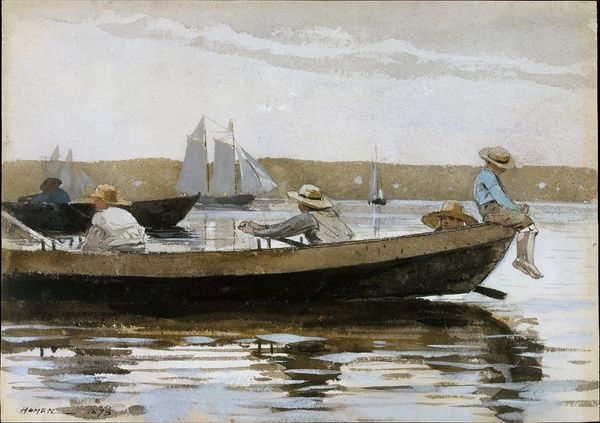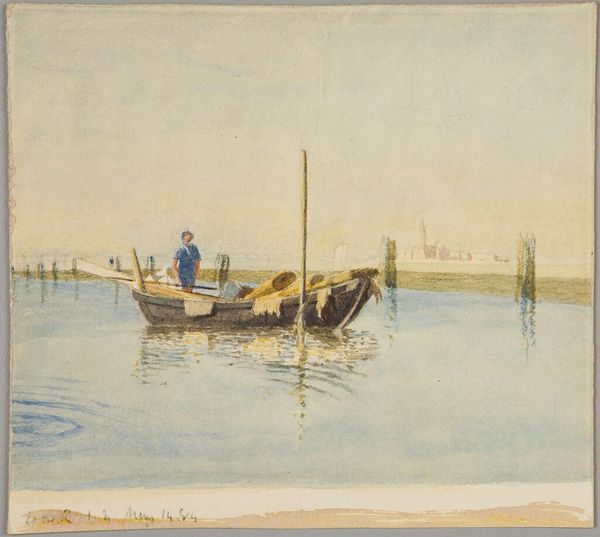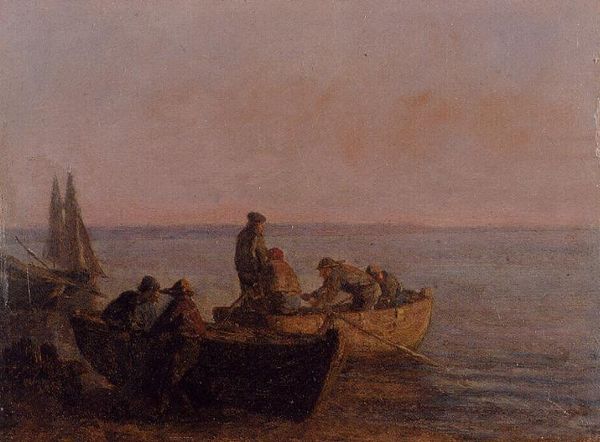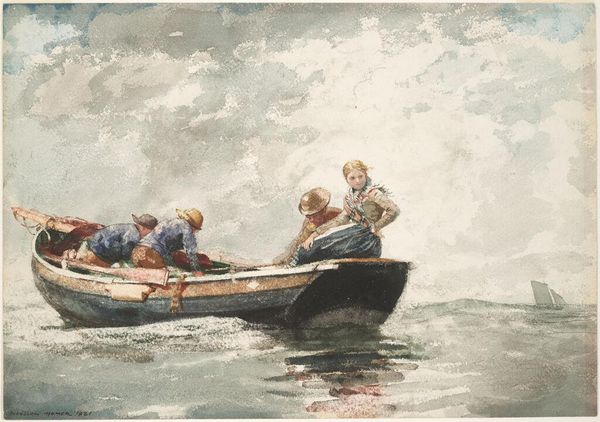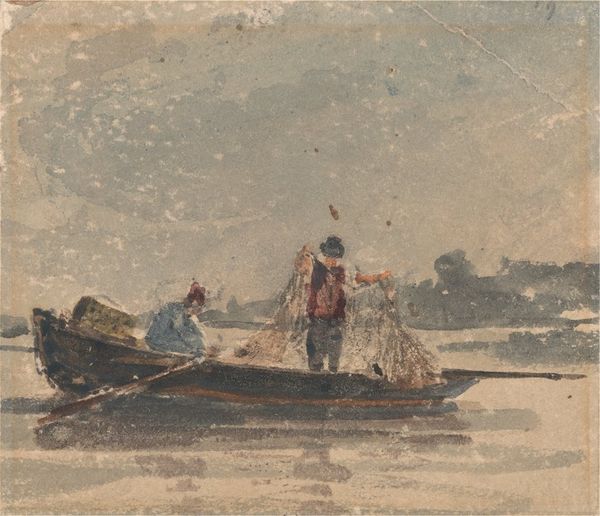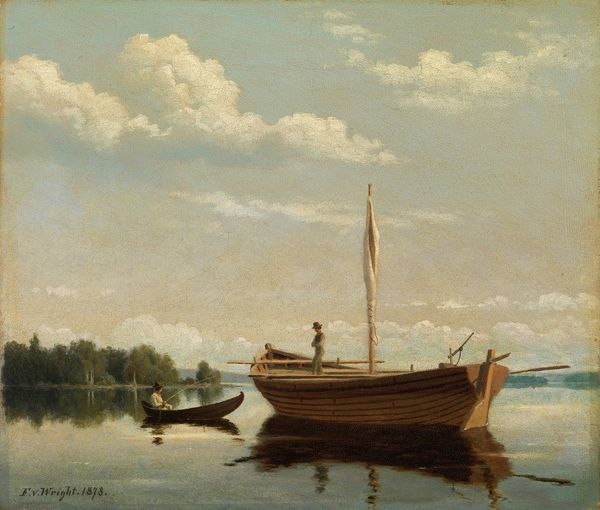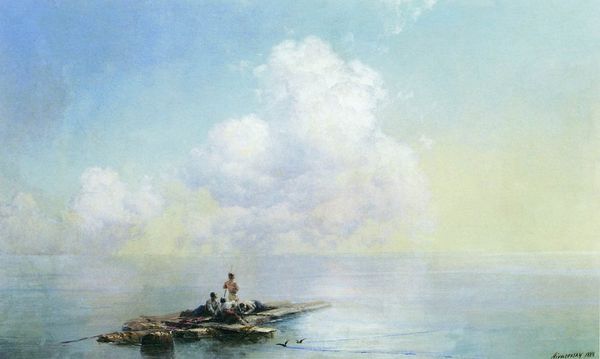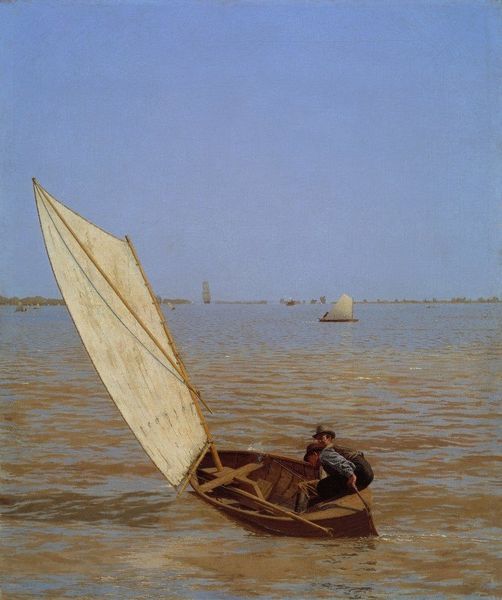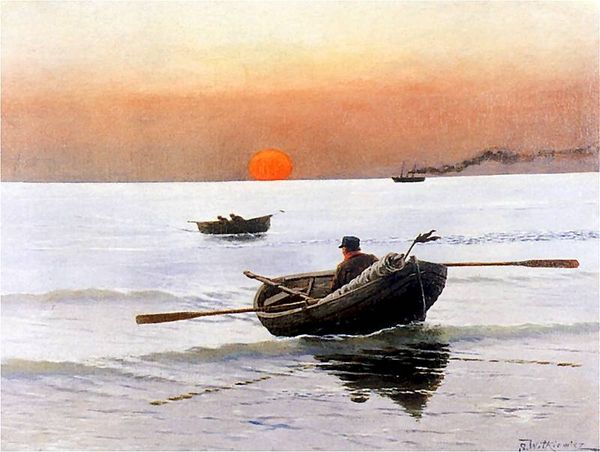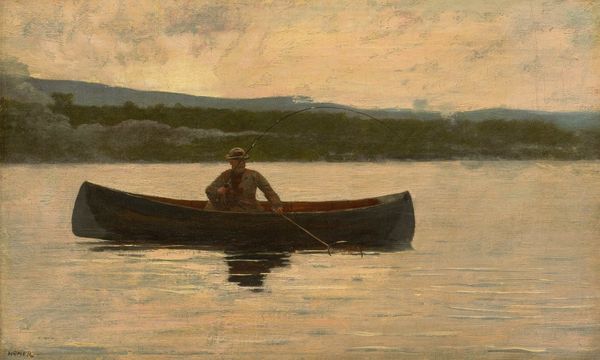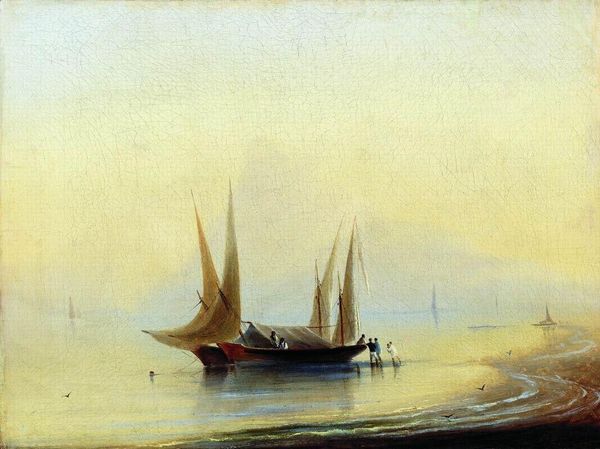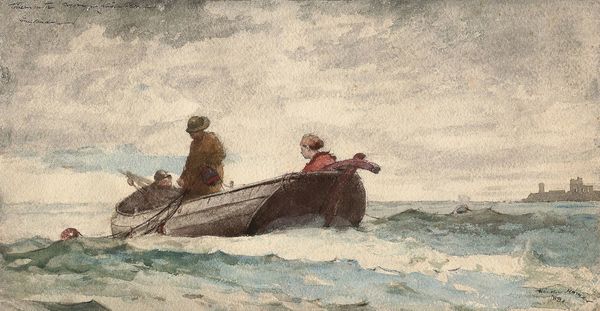
watercolor
#
figurative
#
impressionism
#
landscape
#
oil painting
#
watercolor
#
watercolour illustration
#
genre-painting
#
watercolor
Copyright: Public Domain: Artvee
Curator: Let’s explore "Three Boys in a Dory with Lobster Pots," a watercolor painting by Winslow Homer. Editor: Immediately, the vastness of the water strikes me. There’s a peaceful yet lonely mood to this scene; a real sense of endless space where the boys are sort of dwarfed. It’s got this wonderfully muted palette too, full of almost dreamy, melancholic vibes. Curator: Precisely. Homer masterfully employs watercolor to create these effects. Note how the horizontal composition, segmented into the sky, sea, and reflection, establishes a rhythmic structure and expands the dimensions of the scene. The boys and their activity become subordinate to this wider tableau. Editor: Subordinate perhaps, but also essential, don't you think? They are central. Without the kids the painting might not feel the same. The reflection is so poetic. Curator: In its careful diffusion, the image becomes particularly interesting from a structural perspective. The interplay of light and shadow across the water's surface adds visual depth and texture to this watercolor, even while adhering to principles of simple planar organisation. Note how each element mirrors— or, indeed, resists the mirroring effect—of elements of composition within. Editor: Resistance! I love that. Maybe that's the artist in him saying it shouldn't be perfectly flat! Do you think he intended to capture a specific narrative or moment, or rather something more atmospheric and universal? He must have thought hard about whether or not he should use such washed out colors. There must have been temptation to paint it brightly. Curator: In some of Homer's seascapes, one certainly gleans anecdotal traces, specific visual content as signs for the construction of representational narrative, yes. However, consider his strategic blurring, those open visual zones... Perhaps a greater degree of ambiguity invites a broader, symbolic interpretation. What do the lobster pots *really* signify? Editor: Hmm. What *do* lobster pots signify, anyway? Freedom maybe? It might mean money! And that means possibility for some. They give us pause. I think, fundamentally, that Homer encourages us to bring ourselves to the image and meet him and the figures halfway across all that painted water. What an absolute joy it's been. Curator: Indeed. This piece provides a strong case study of technique used to explore human relationships and natural form. I agree. Thank you.
Comments
No comments
Be the first to comment and join the conversation on the ultimate creative platform.
